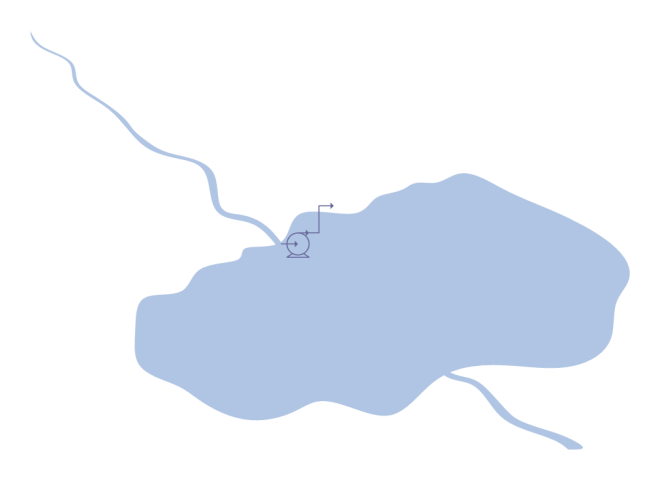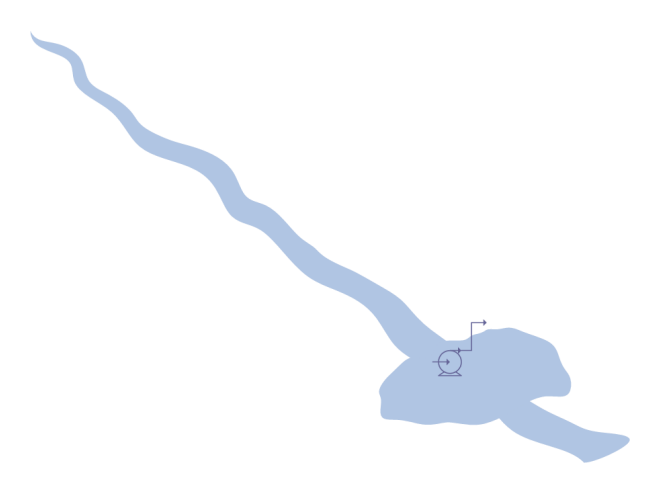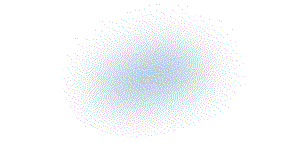Why is angiogeology relevant?
Angiogeology is the science of underground water flows. It is these flows — and not the water reservoirs from which they come — that determine the productivity potential of water bearing sites. Moreover, they are more particularly the points of formation of the water vessels on the outlet side of the water reservoirs which must be required, because they correspond to the optimal collecting locations.
The best way of apprehending the raison d'être of the angiogeology is to transpose conceptually to surface water - with hydrology thus - the approach followed within the framework of the survey of groundwaters. Comparisons are misleading, but it can help from a teaching point of view.
Flow or capacity?
Imagine that you must collect surface water (say, to feed a city) and that you have to chosse between two sites:
- The first site consists of an immense pond, fed exclusively by a small waterway. The collecting point is symbolized in the schema below by a pump (to illustrate it visually, not to stick to the reality).
- The second site consists of a small pond, but is fed by a big river .
Each One of these two hydrological complexings is likely to exist. They depend on the hydrological feedings and the structure of the ground. If the volume of the pond is stable in time, its outgoing flows (waterways which of it results) are worth its incoming flow (waterways which feed it).
Which site will you choose for the purpose of durable exploitation (anything else remaining equal in addition, like the composition of water, accessibility, the distance instead of consumption, etc…)?
The answer is obvious and we will not make you the insult suggest it.
In Fact, the presence of a pond is absolutely not necessary, if the taking away are constant. If Not, the presence of the pond allows a smoothing of the possibilities of collecting well, but does not influence of anything what can be taken over one long period (long compared to the possible fluctuations). The pond is mentioned to make the parallel with the water reservoirs on which traditional hydrogeology concentrates its research (while the angiogeology concentrates on flows).
To Find what it is necessary to seek or… to seek what one is able to find?
What has, until now, conditioned geophysical research is what one thought of being able to find most easily with the capacities of research one had. The reservoirs are bulky, therefore a priori easier to detect than thin water vessels.
- The prospective activities of traditional hydrogeology seek the water reservoirs,
- on the other hand, the angiogeology concentrates especially on the leakage points of these water reservoirs by where underground water flows pass which can be collected. These are precisely the flowswhich:
- reflect best the potential of the water bearing site,
- are guaranteeing of a sustainable exploitation,
- determine the optimal collecting locations.
Approximately, the angiogeology makes it possible to forget the reservoirs and to concentrate on flows, because in fact flows determine the potential of exploitation of a water bearing site.
With the angiogeology, the technical possibilities join the industrial and commercial objectives. What the angiogeology detects is well what it is important to detect: namely the leakage points of the water reservoirs (that we call also exurgences or points of exurgence, of Latin ex-urgere: “to press out”).
They are precisely these the natural of geothermal reservoirs/hydrothermal leakage points which constitute to Holy Grail it hydrogeological survey.
If it were necessary to visually illustrate the difference in prospective capacity between the angiogeology and the other approaches geophysics, it would be advisable to compare an image fuzzy of reservoir - and all the more fuzzy as the reservoir is with one great depth - with image a very clear of flows of circulation between groundwater sheets, but completely ignorant of - or rather indifferent to - the 3 D structure of these groundwater sheets.
To Find a reservoir water is not enough. What imports it is its outgoing flow at the place where this one can be collected in an optimal way.
This objective of location of the water flow of circulation continued by the angiogeology do not concern the INIACA (there is only with), or the pious vow, or the petition of principle. The angiogescopy allows, today, with those which control it, to detect and map in space, in an extremely precise and reliable way, the structures in which the geological fluid circulates in the ground: water vessels. The angiogeological survey returns other research obsolete geophysics, because it finds what it is necessary to seek and right does not seek what it has the means of finding.
Conclusion
Today, the angiogescopy makes it possible to locate the water vessels - and thus also optimal collecting locations with a precision which no hydrogeologist never would have dared imagined before - which it is within the framework of a geothermal survey, hydrothermal or mineral-water or of any other type of hydrogeological research.




